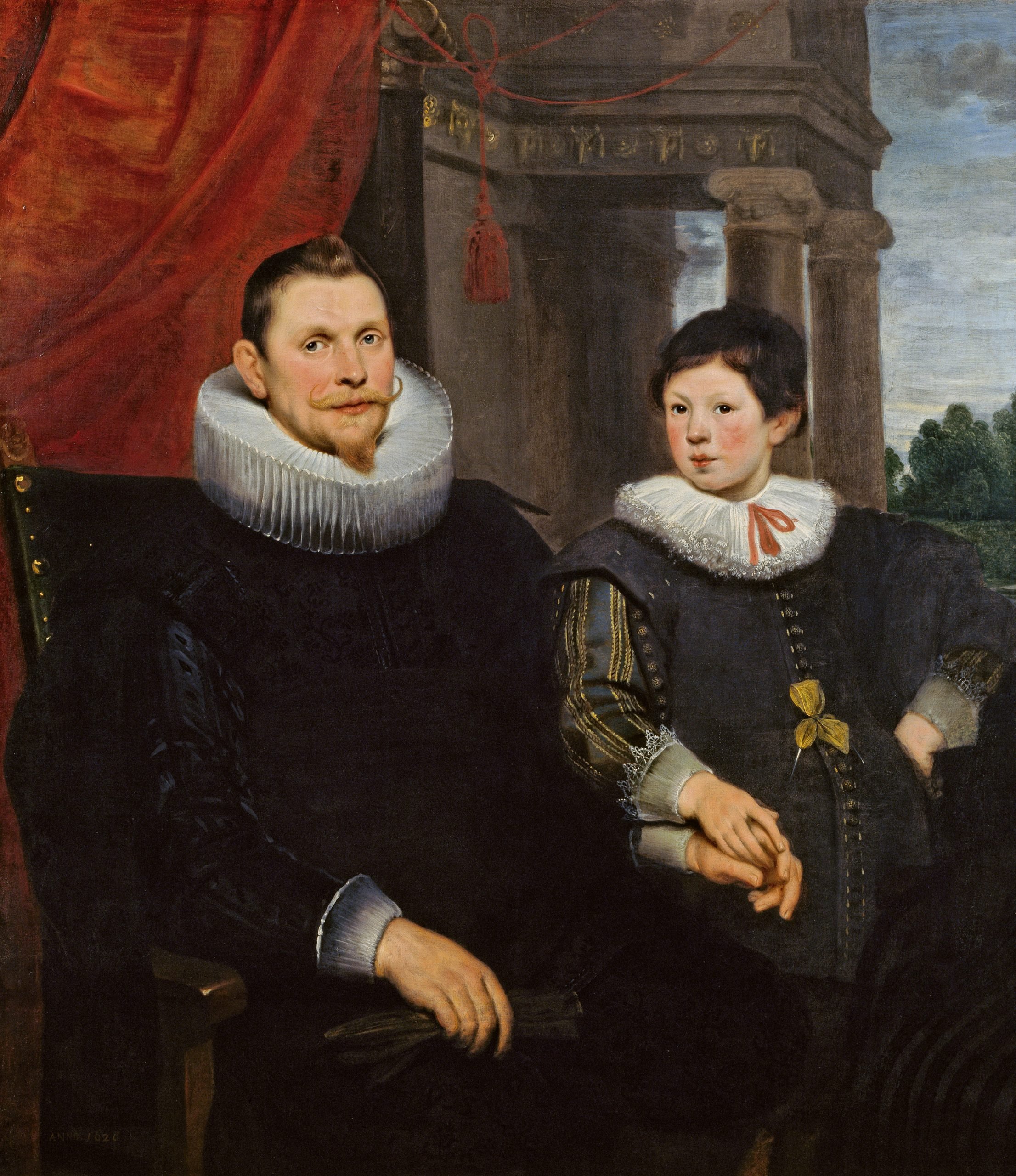
A rare reunion has taken place at the Nivaagaard Collection in Denmark, as the museum has located the image of a woman, who, for nearly 200 years, has been missing from a 17th-century family portrait.
Double Portrait of a Father and Son (1626), painted by Flemish artist Cornelis de Vos in luminous color, sees a resplendent duo in bourgeois garb, the son tenderly clutching his father’s hand. But part of a dress, poking out of the lower right-hand corner of the picture, has long indicated that the painting was missing a figure—quite likely a mother, who had been cropped off at some point.
A research team, put together by the museum to study its Dutch baroque collection, duly set on a hunt for this missing woman last year.
They began with a 1966 conservation report by the National Gallery of Denmark, which provided another vital clue. The volume contained photographs of the painting without its frame following a restoration, revealing part of a woman’s arm, complete with an elaborate cuff. Her hand, with one finger encircled by a pricey ring, held a pair of embroidered gloves lined with red velvet.
An unframed Double Portrait of a Father and Son (1626), with a woman’s hand visible on the right. Photo: The Nivaagaard Collection.
Detail of the woman’s hand holding a pair of embroidered gloves. Photo: Screenshot from Nivaagaard Collection’s short film, The Lost Woman With the Brown Eyes.
“We began our search by looking for matchers among all the sitting women in de Vos’s oeuvre,” said Jørgen Wadum, the museum’s researcher and special consultant. “This turned up dozens of women amongst the archives of RKD [the Netherlands Institute for Art History] and the Getty Research Institute.”
Wadum then did the next logical thing: He googled “Cornelis de Vos portrait of a woman”—and he found her. “It was totally unexpected!” he said.
Cornelis de Vos, Portrait of a Woman (1626), unrestored. Photo: The Nivaagaard Collection.
His search had led him to de Vos’s Portrait of a Woman (1626), an image of which appeared in a 2016 interview with Dutch art dealer Salomon Lilian. In 2014, Lilian had acquired the work at an auction at Christie’s London, and what’s more, had it cleaned and restored.
To the Nivaagaard team, the connections between the two paintings were plain. The elegant lady portrayed in Lilian’s painting wore a millstone collar similar to that of the father in Double Portrait; her brown eyes, too, matched those of the young son’s. The restoration also revealed that the brown background of Portrait of a Woman was merely overpainting; the woman actually stood against a landscape, filled in with some distant poplar trees and heavy clouds.
Cornelis de Vos, Portrait of a Woman (1626), after restoration. Photo: The Nivaagaard Collection.
It was this backdrop that lined up with the one in Double Portrait, making them an undeniable match. “Fortunately, Lilian had had the painting restored,” said Wadum. “Otherwise, we may have missed the link to our double portrait.”
Portrait of a Woman is notably smaller than Double Portrait, its height only less than half of the larger work. Researchers believe the original family portrait may have been severed into two paintings, possibly after sustaining damage, around 1830–1859. Double Portrait was acquired by Danish businessman and Nivaagaard founder, Johannes Hage, in 1907.
The reunited family portrait. Photo: The Nivaagaard Collection
The team is also continuing to source the identity of the family as much as the provenance of the family portrait. They have homed in on the 1802 sale of a painting, titled A Family Picture of Three Portraits of De Vos, in London, a canvas that would reappear at various other auctions in England between 1812 and 1830. At these later sales, the portrait was curiously retitled or described as A Burgomaster, His Wife, and Son by De Vos (burgomaster denotes the mayor of a town).
“Is this merely an interpretation of the auctioneer, or did the lost upper and lower right corners of the canvas contain an inscription?” said researcher Angela Jager. “In any case, the ruling elite is exactly the type of clientele one would expect for a monumental family portrait by the sought-after portrait painter.”
While research is ongoing, the Nivaagaard Collection has acquired Portrait of a Woman with a grant from the New Carlsberg Foundation. The museum will exhibit both portraits as part of its Painting Collection, illustrating what museum director Andrea Rygg Karberg called “a huge scoop for Dutch baroque art history.”
Speaking about the reunited family portrait, he added: “All three of the subjects take on an entirely new dimension, depth, and glow when they are contemplated together as originally intended, rather than in isolation from each other.”
More Trending Stories: